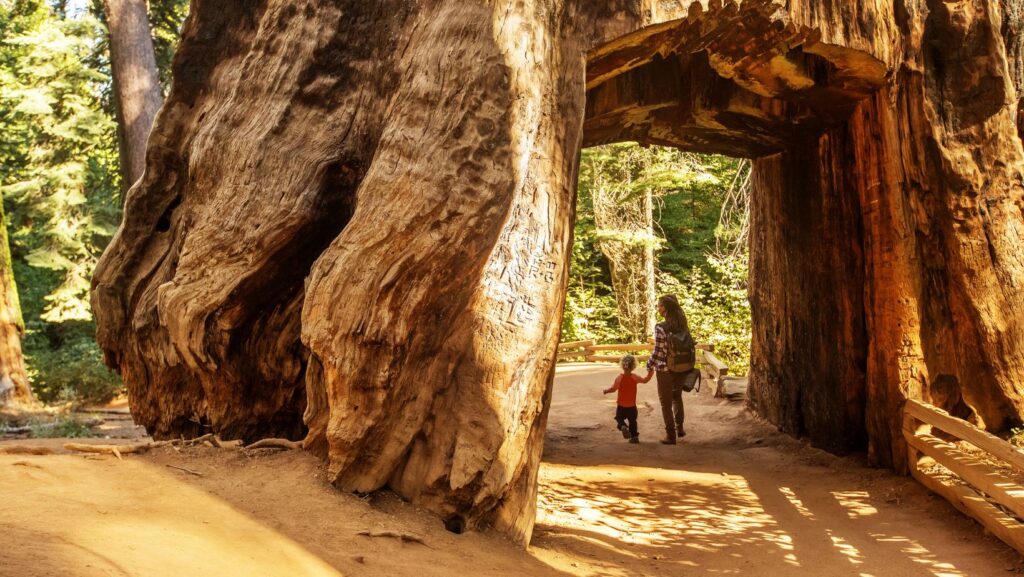It’s no secret that Yosemite National Park, with its awe-inspiring landscapes and diverse wildlife, is a paradise for outdoor enthusiasts. But for those who really want to immerse themselves in this natural wonderland, backpacking in Yosemite offers an unparalleled experience.
Venturing off the beaten path, one can discover the park’s hidden treasures, from serene alpine lakes to panoramic vistas that leave you breathless. Whether you’re a seasoned backpacker or a novice ready to take on your first multi-day hike, Yosemite’s backcountry is waiting to captivate your adventurous spirit.
In this article, you’ll find valuable insights to help you plan your Yosemite backpacking trip. So, lace up your hiking boots and prepare to embark on an unforgettable journey into the heart of one of America’s most beloved national parks.
Embarking on a backpacking adventure in Yosemite National Park entails special preparation. This section offers a detailed guide to key gear essentials and provides insights into permits and regulations to adhere to.
Yosemite Backpacking
Gear Checklist
Equipping oneself with the right gear significantly elevates a backpacker’s experience. Prioritize the inclusion of essentials like a sturdy backpack that can comfortably accommodate required gear. Pack a lightweight tent suitable for diverse weather conditions, and a sleeping bag that can withstand Yosemite’s nighttime temperatures.
 A reliable water filtration system, navigation tools such as maps and compasses, headlamps, and a multi-tool form the core of the mishmash of gear required for Yosemite’s backcountry. A well-equipped first aid kit is critical. Stock up on high-energy food options like trail mix, dried fruits, and energy bars.
A reliable water filtration system, navigation tools such as maps and compasses, headlamps, and a multi-tool form the core of the mishmash of gear required for Yosemite’s backcountry. A well-equipped first aid kit is critical. Stock up on high-energy food options like trail mix, dried fruits, and energy bars.
To safeguard Yosemite’s pristine environment, bring along hygiene essentials that adhere to “leave no trace” principles, such as biodegradable soap and a trowel for digging cat holes. Remember to toss in a bear-resistant food storage container: they’re mandatory for storage of food and scented items in Yosemite’s wilderness.
Permits and Regulations
Adherence to permits and regulations is non-negotiable for any backpacking excursion in Yosemite National Park. The park enforces a permit system to prevent overcrowding and to protect the delicate balance of its ecosystem. A wilderness permit is obligatory, and obtaining one can be slightly challenging during peak summer months due to their limited availability.
Backpackers must adhere to preset campfire regulations, with Yosemite imposing strict rules about where and when fires can be lit. It’s essential to follow food storage regulations using bear-proof containers in order to maintain harmony between wildlife and park visitors. Lastly, utmost respect for the land and mindful observance of ‘Leave No Trace’ practices ensure Yosemite National Park remains an unspoiled gem for future generations to cherish.
Planning Your Yosemite Backpacking Trip
Armed with the knowledge of essential gear and understanding permits and regulations, one can take a step towards planning a memorable Yosemite backpacking trip. This section navigates through the best trails, ideal time, and crucial safety tips for a hassle-free journey.
Best Trails for Backpacking
Several trails beckon the adventurous spirit in Yosemite National Park. For an awe-inspiring journey amidst granite cliffs, sequoias, and waterfalls, consider the following. The 211-mile John Muir Trail, hikers experience Yosemite’s heart, with sights like Half Dome and El Capitan to garnish their expedition. Another popular route is the 60-mile High Sierra Loop, offering spectacular landscapes of alpine meadows and a series of beautiful high-elevation campsites.
When to Go
Timing the Yosemite backpacking trip holds equal importance as knowing where to go. As a rule of thumb, late spring to early fall proves ideal for most trails. From May to June, backpackers witness the majesty of gushing waterfalls and blooming wildflowers. On the flip side, September offers a quieter, less crowded park, if serenity is a priority.
Safety Tips
Regardless of the trail or season backpackers choose, observing safety measures ensures a pleasant and safe trip. It includes maintaining a respectful distance from wildlife, preparing for sudden weather changes, and keeping a constant line of communication for any emergencies. Moreover, guidelines such as having a bear-resistant food storage container and understanding ‘Leave No Trace’ principles contribute greatly to wilderness safety and conservation.

